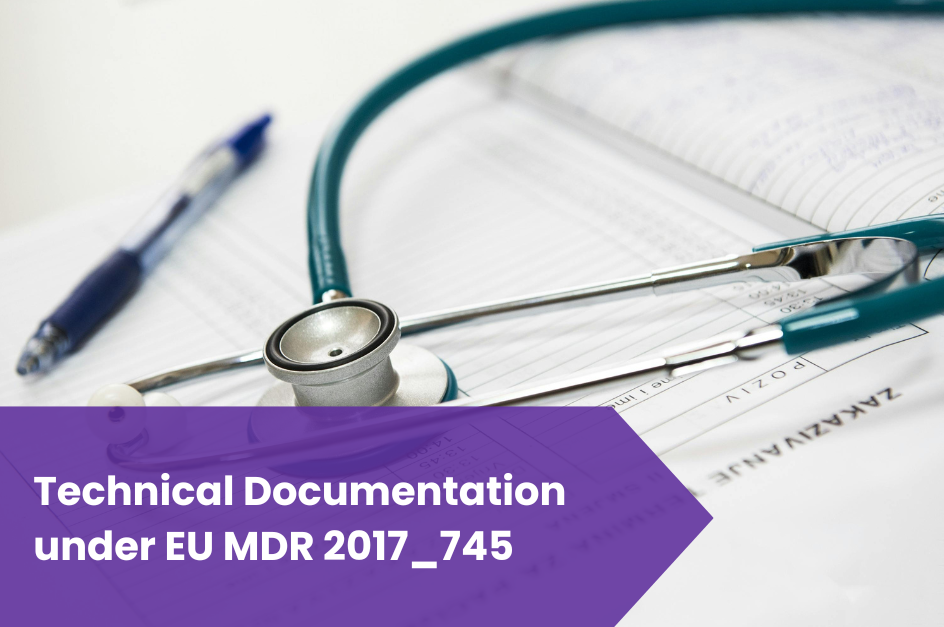Introduction to Technical Documentation under EU MDR 2017/745
Technical Documentation under the EU Medical Device Regulation is a thorough collection of documents proving a medical device’s conformity to the regulations. It’s essential for both pre-market and post-market compliance. This documentation must be readily accessible to regulatory authorities for inspection.
Annex II: Technical Documentation
- Device Description and Specification
- This section provides a comprehensive description of the device, including its intended purpose, indications, contraindications, and principle of operation. It also covers detailed specifications of the device, its variants, and accessories. The description should align with the device’s intended clinical use and user population.
- Information to be Supplied by the Manufacturer
- It includes all information regarding the labeling of the device, instructions for use, and any promotional materials. This information must be clear, understandable, and accurately reflect the device’s intended use. It should also include safety information, warnings, precautions, and potential adverse events.
- Design and Manufacturing Information
- Detailed documentation of the design, including engineering drawings, materials used, and critical components, is required. It should cover the manufacturing process, quality control measures, and standards applied. This section should provide a clear understanding of how the device is constructed and how its design aligns with its intended use.
- General Safety and Performance Requirements (GSPR)
- Manufacturers must document the assessment of the device against the GSPR outlined in Annex I. This includes justifying the applicability of each requirement and demonstrating compliance through testing, scientific literature, or clinical evidence.
- Benefit-Risk Analysis and Risk Management
- This entails a systematic risk management process, following ISO 14971 standards. Manufacturers should identify potential hazards associated with the device, estimate and evaluate associated risks, control these risks, and monitor the effectiveness of the controls. A benefit-risk analysis must demonstrate that the benefits of the device outweigh any potential risks.
- Product Verification and Validation
- This includes pre-clinical (such as laboratory testing, biocompatibility) and clinical data. Clinical evaluations must demonstrate the device’s safety and performance. The documentation should include all studies, investigations, and other evaluations conducted. If clinical trials are conducted, detailed reports should be included.
Annex III: Post-Market Surveillance System
- Post-Market Surveillance (PMS) Plan
- A robust PMS plan outlines strategies for actively and systematically gathering, recording, and analyzing relevant data on the quality, performance, and safety of a device throughout its entire lifecycle. This plan should be proportionate to the risk class and appropriate for the type of device.
- Periodic Safety Update Report (PSUR)
- For higher-risk classes (Class IIa and above), a PSUR is mandatory. This report summarizes the findings from the PMS data, analyzing the device’s risk-benefit balance, main findings of PMCF, volume of sales, and an estimation of the size and other characteristics of the population using the device.
- Post-Market Clinical Follow-up (PMCF)
- A PMCF is part of the clinical evaluation process and is necessary for updating the clinical evaluation and the risk management. It involves a continuous process of collecting and evaluating clinical data pertaining to the use of a device, aiming to confirm safety and performance throughout its expected lifetime, identify previously unknown side-effects, and monitor the identified risks.
Importance of Technical Documentation
The Technical Documentation is a critical tool for regulatory compliance. It’s a testament to the device’s safety and efficacy. It’s not just a regulatory requirement but also a strategic document that can streamline the process of bringing a device to market and maintaining it there. Well-prepared documentation can significantly reduce the time and cost associated with regulatory approvals.
Challenges in Preparing Technical Documentation
Manufacturers often face challenges in preparing this documentation, including maintaining the comprehensiveness and accuracy of the information, especially as products evolve. It requires a multi-disciplinary approach involving expertise in regulatory affairs, clinical research, engineering, and quality assurance. Additionally, keeping this documentation up-to-date with the latest regulatory changes and post-market data is a continuous and demanding task.
Conclusion
Technical Documentation under the EU MDR is a cornerstone of medical device regulation, ensuring devices are safe and effective for their intended use. The complexity and depth of this documentation reflect the EU’s commitment to high standards of patient safety and product quality. Manufacturers must approach this documentation as a living document, continually updated and maintained throughout the device’s lifecycle. While challenging, effective technical documentation is essential for market access and the long-term success of a medical device in the EU market.

